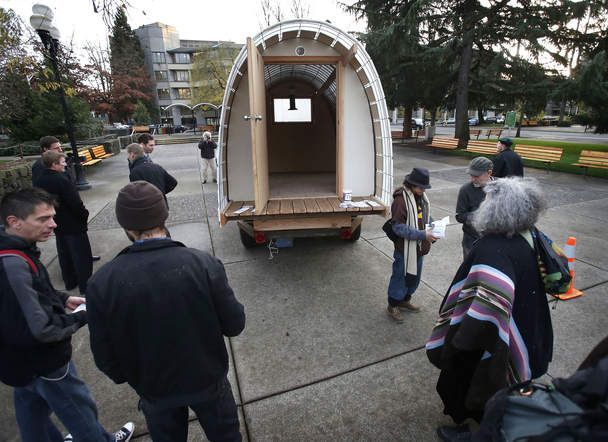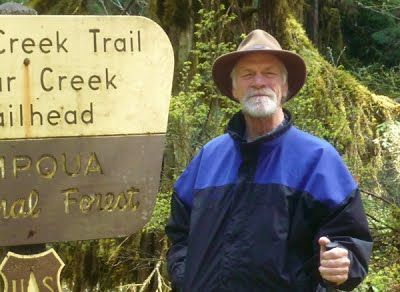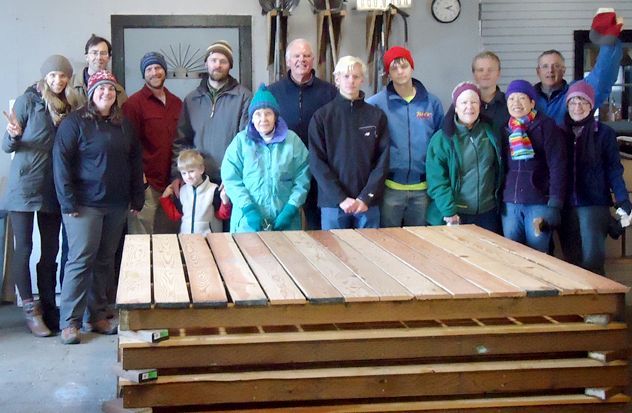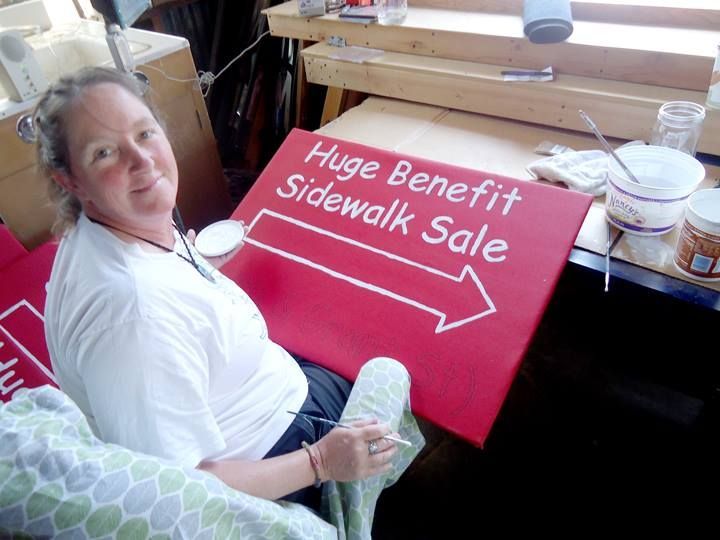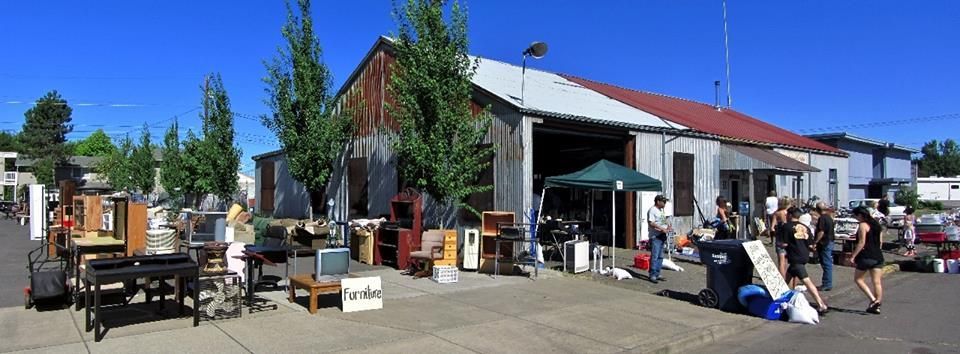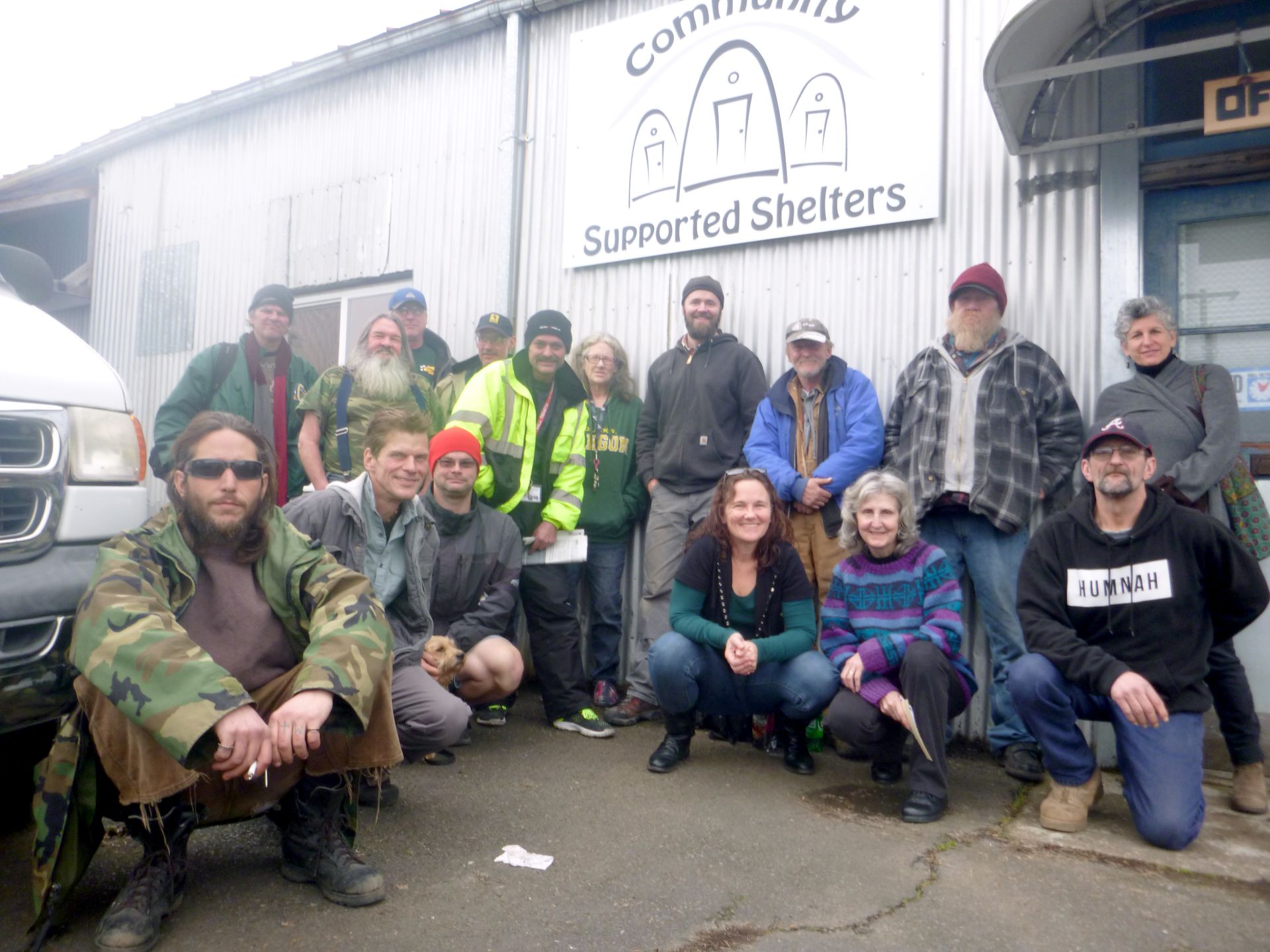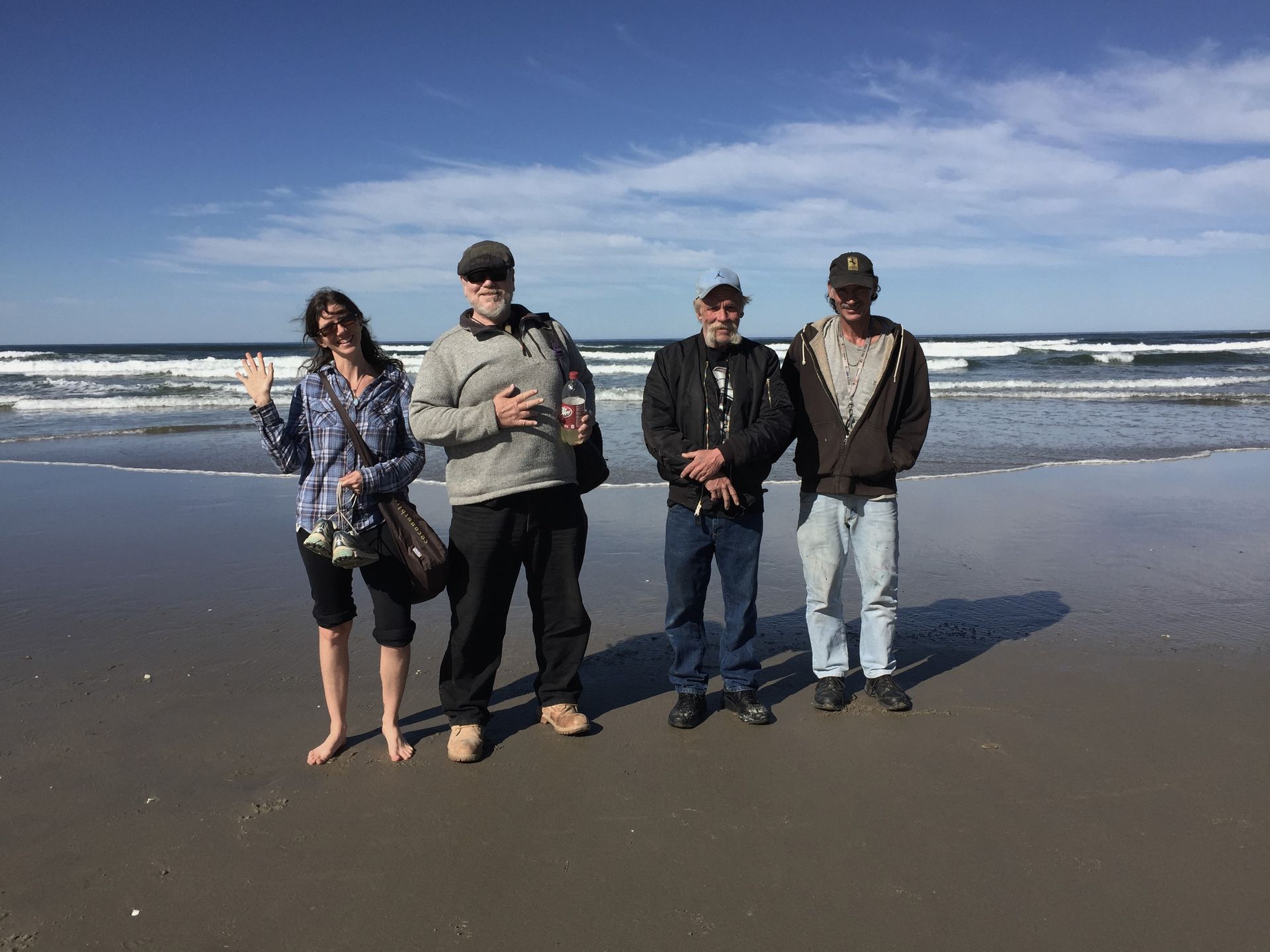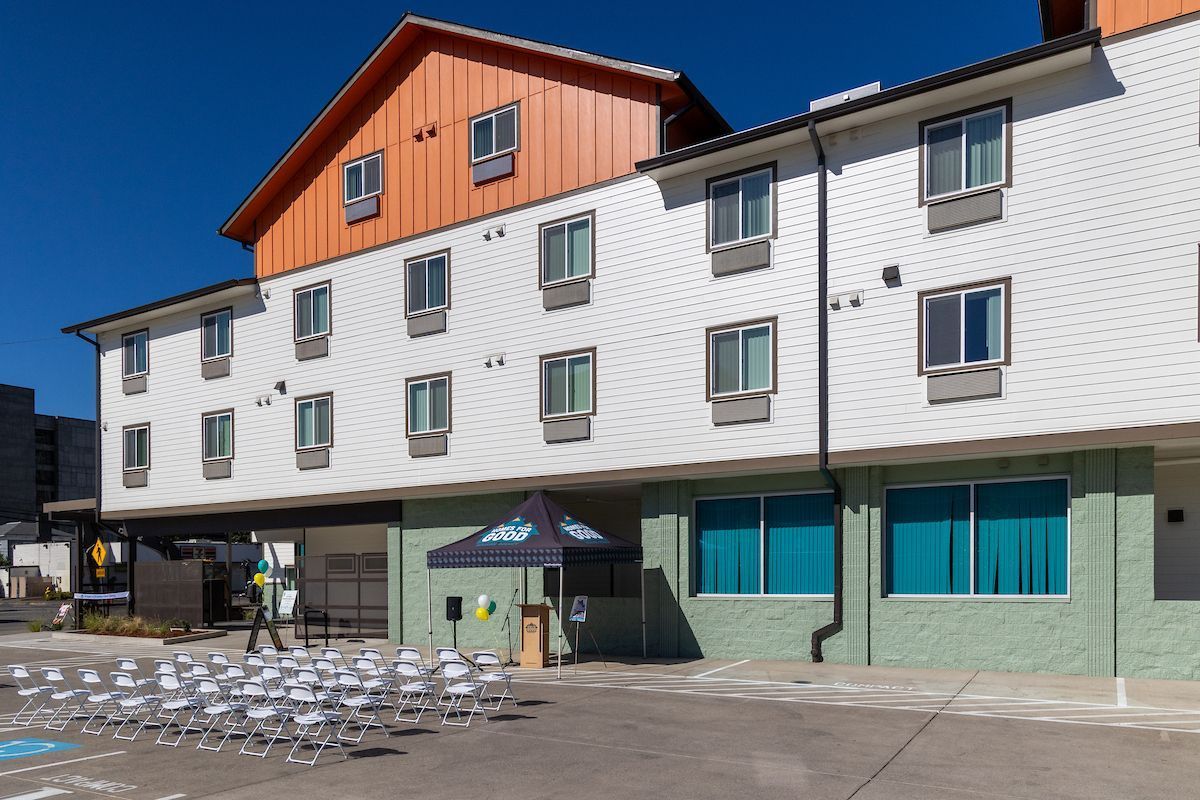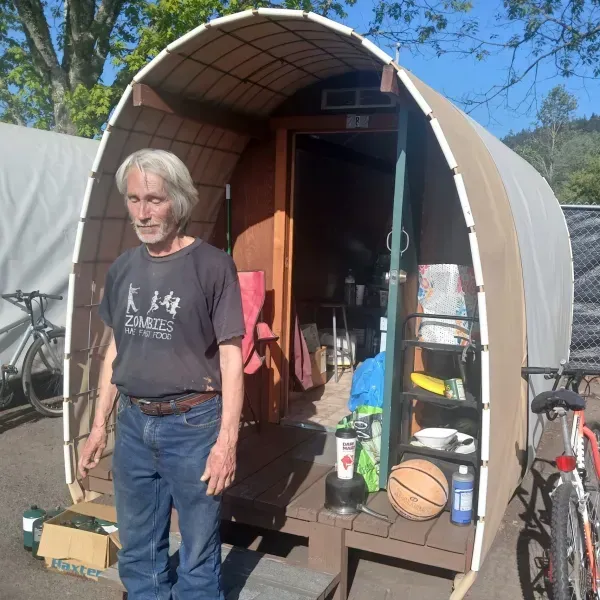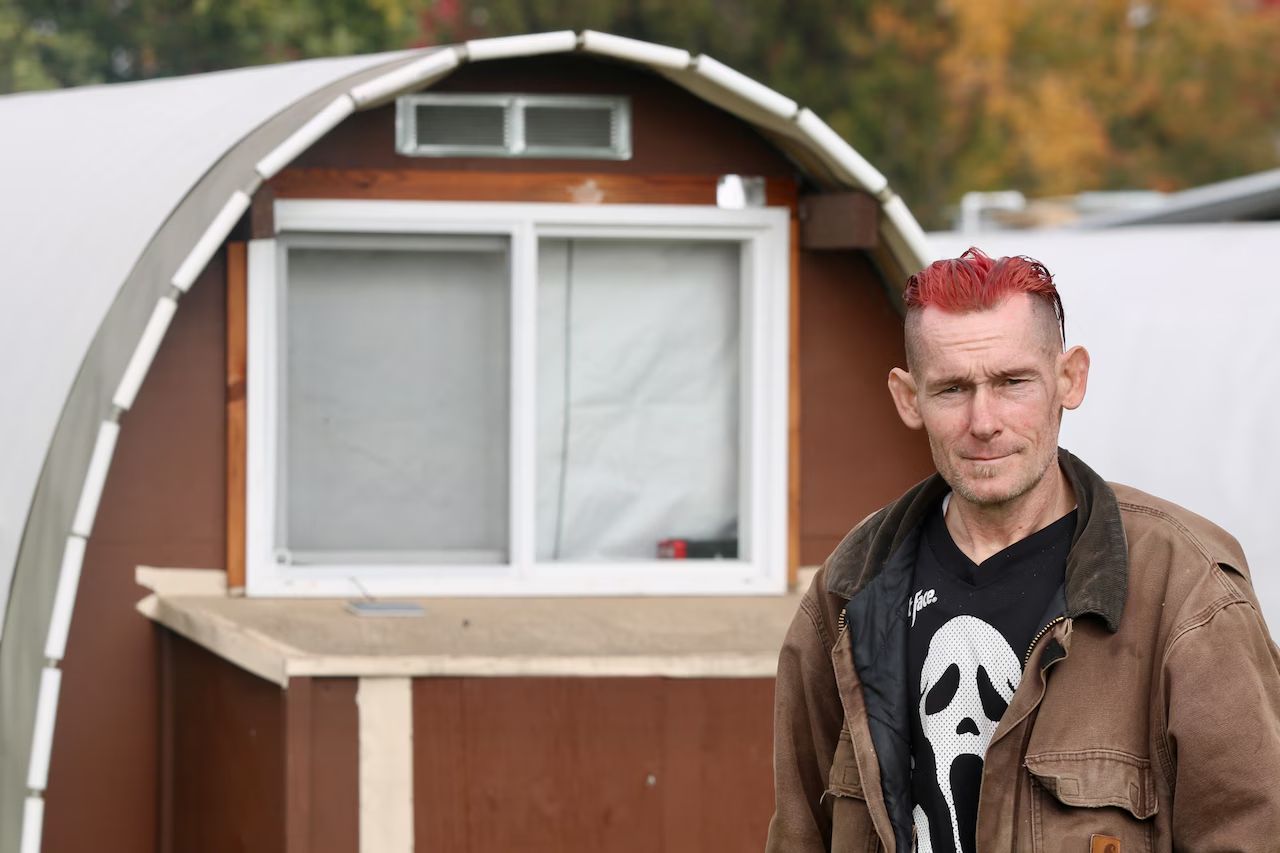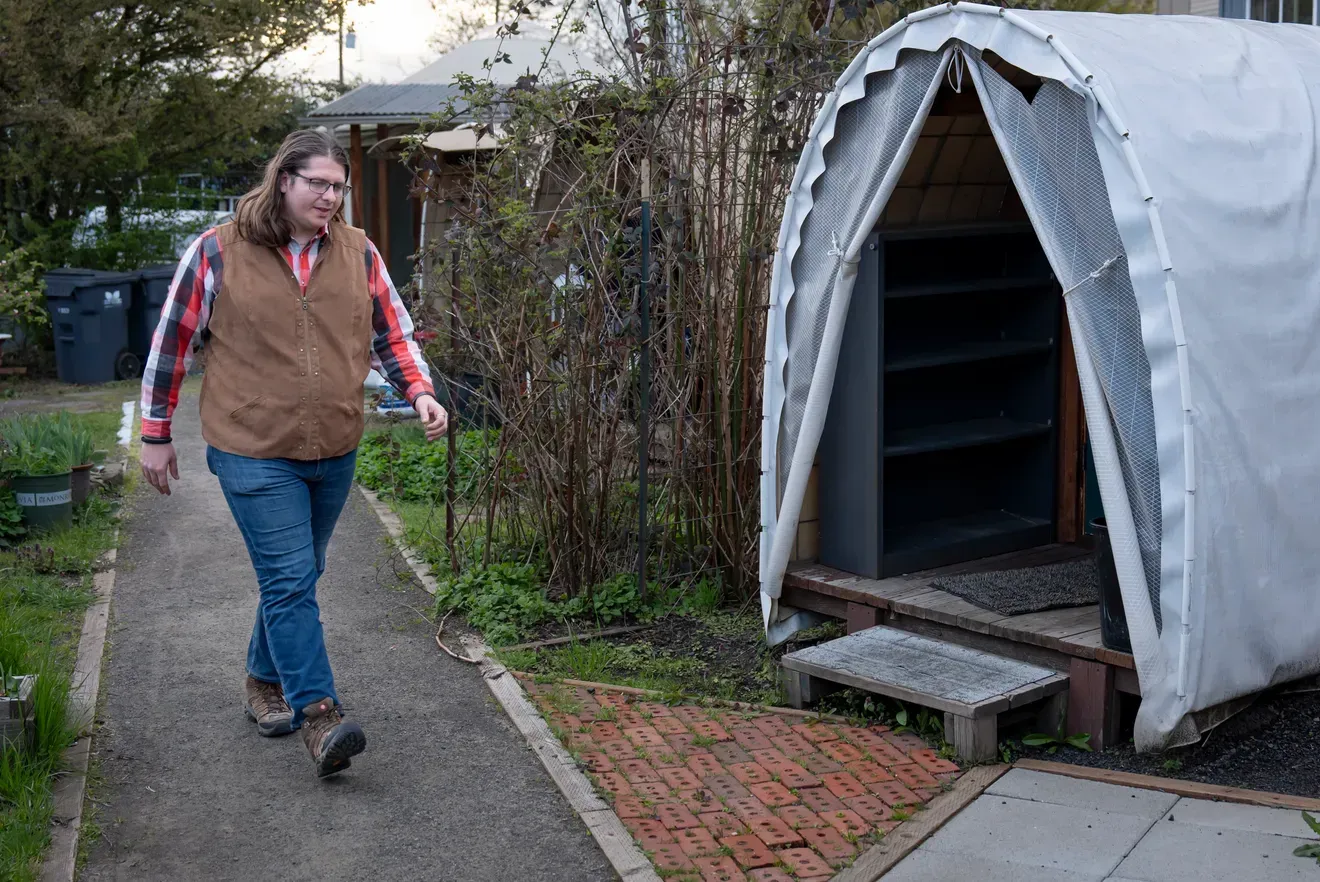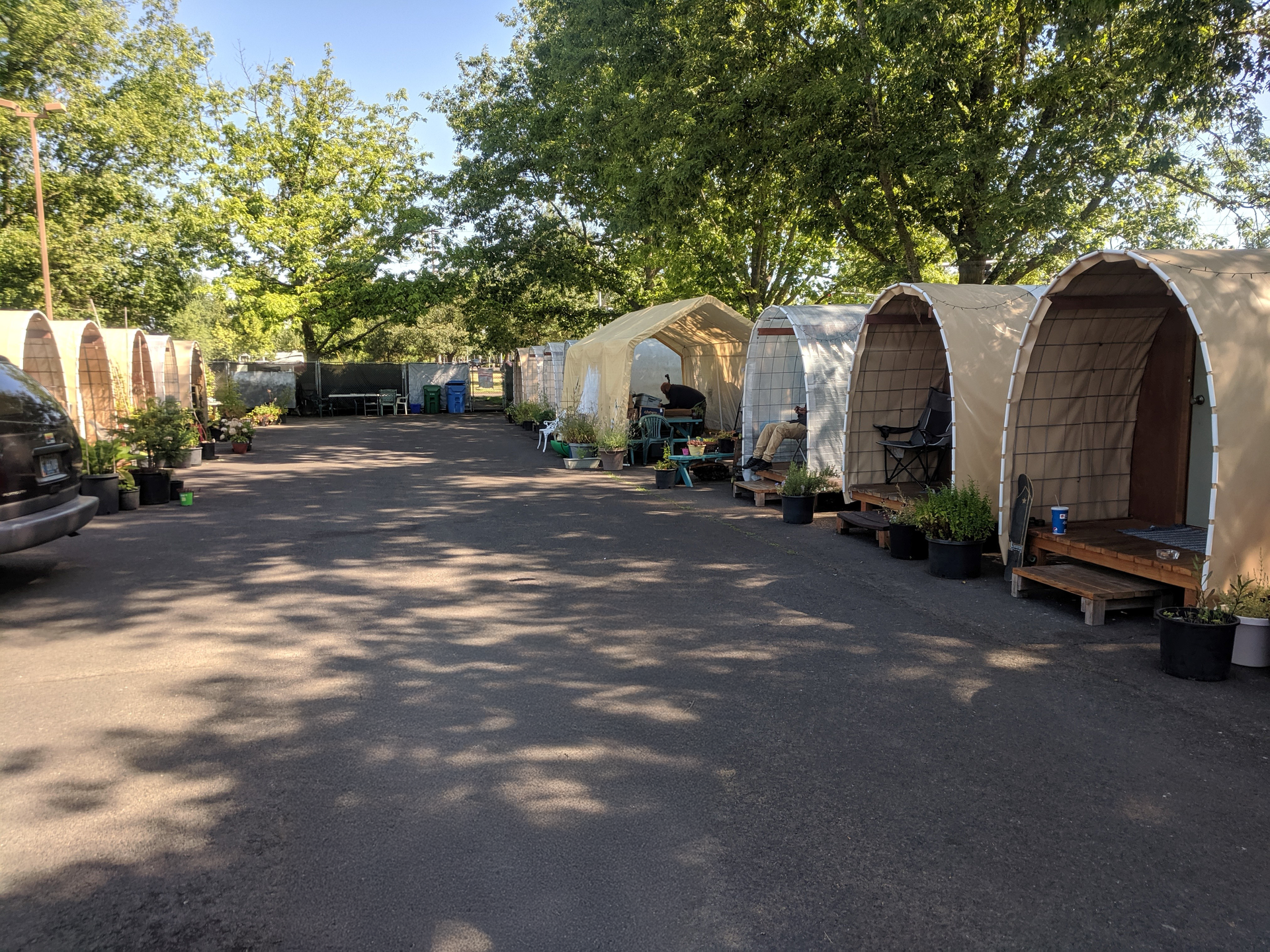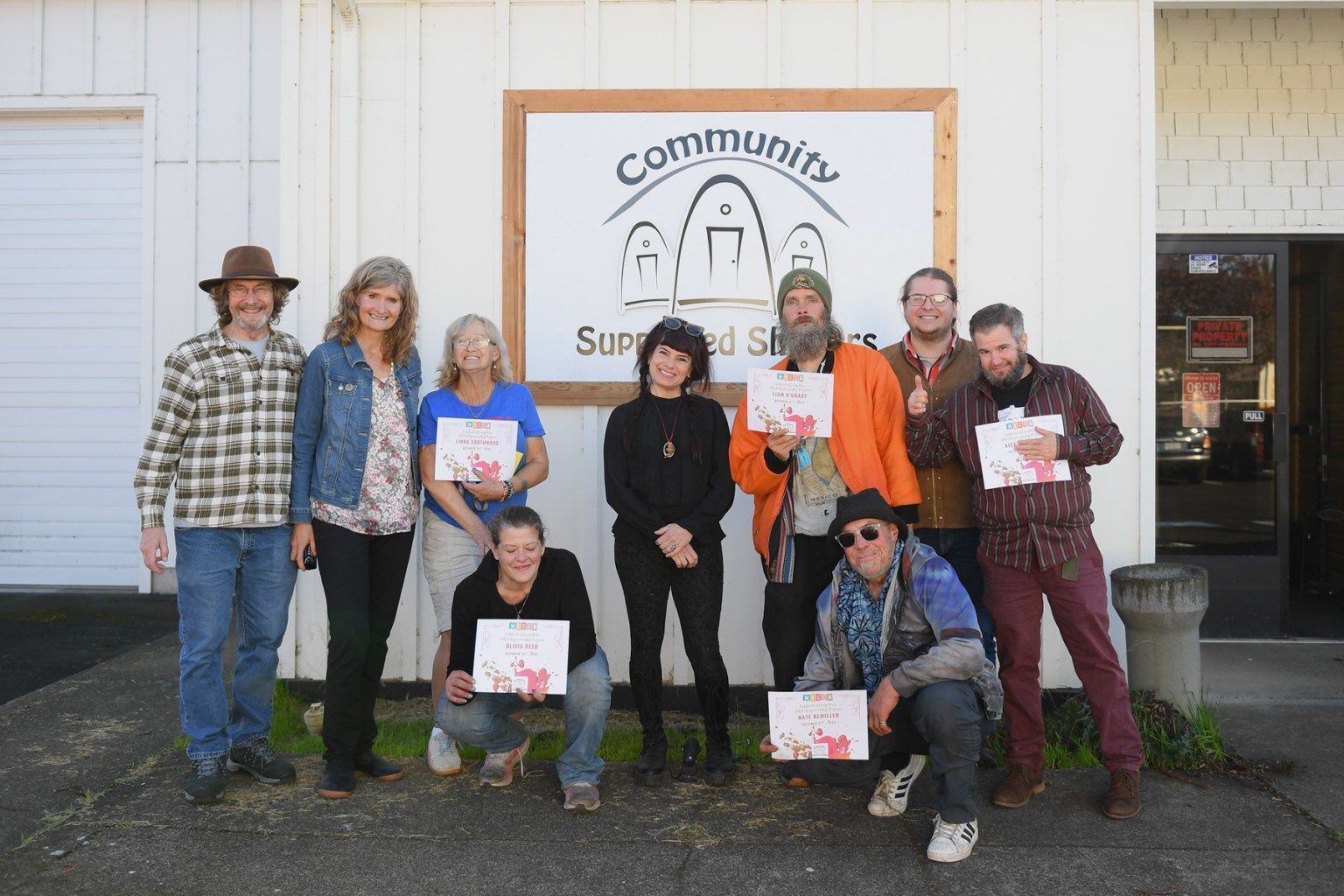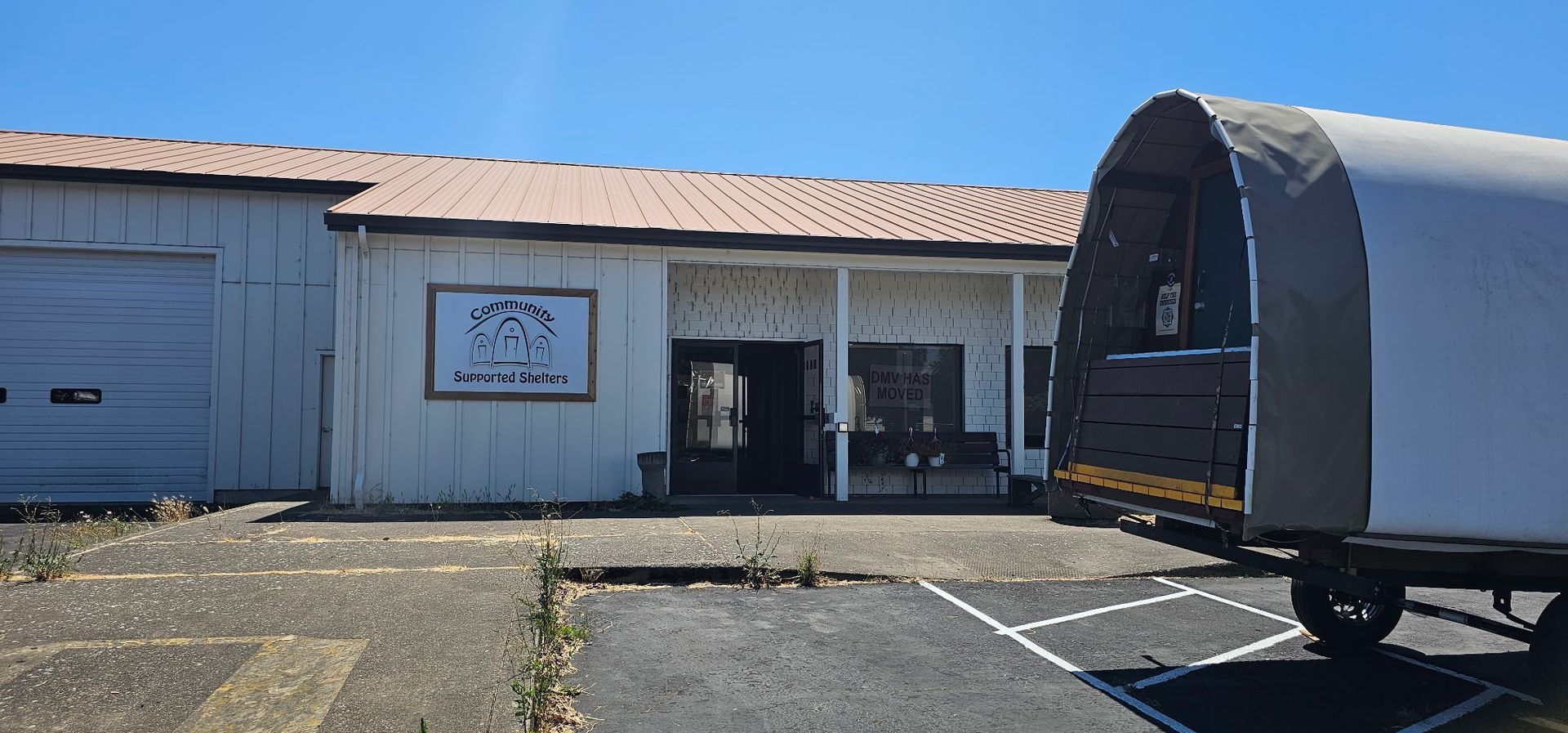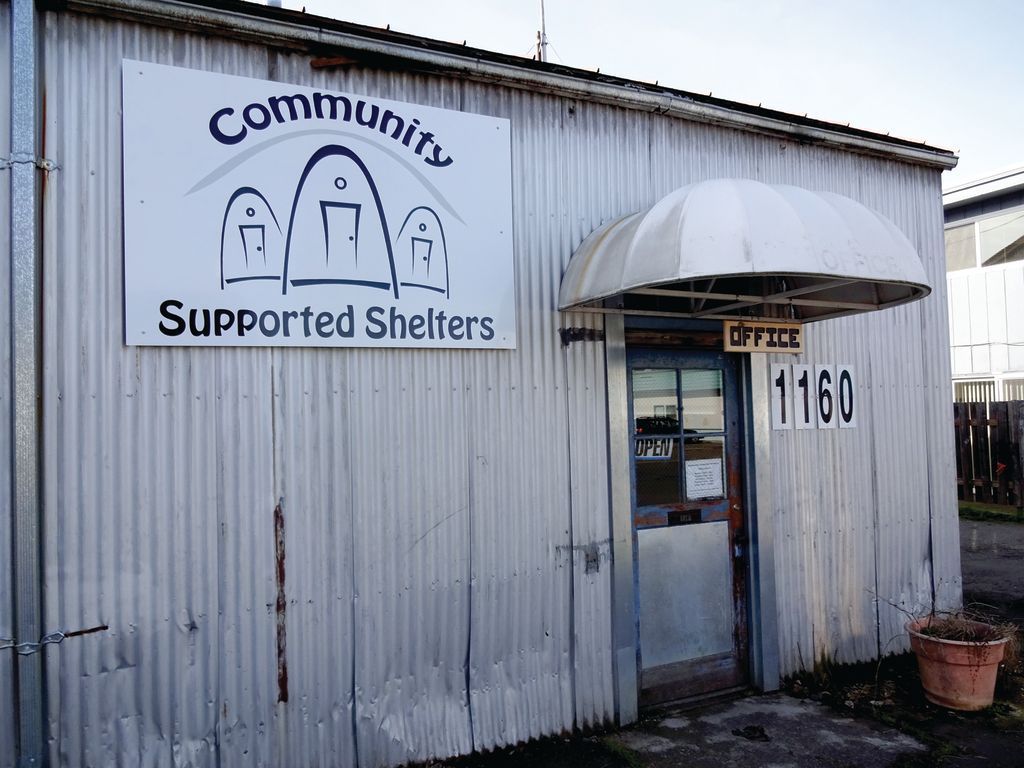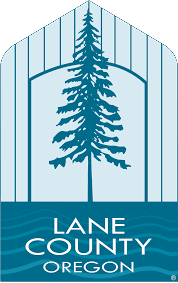Support From A Community:
Community support is an inherent part of CSS’s identity
Fay and Erik de Buhr didn’t really have any intention of starting a nonprofit that would build and manage emergency shelter for the homeless. But their experience doing “interpersonal social work” and experimenting with small living spaces meshed with unexpected synchronicity with community demands to take real action to address homelessness in Eugene-Springfield.
“We really just kept following threads,” Erik says.
A prototype Conestoga Hut, which Erik and Fay and son Abram were living in behind the CSS shop, was set up in Eugene’s Park Blocks for a City Council meeting in late 2012. The purpose was to encourage the council to include such structures in the city’s car camping program so they could be used in Opportunity Village, which was then still in the planning stages.
The council approved inclusion of the Huts in the car camping program but that early exposure of the Hut bore other fruit as well. Two donors contributed money to build the first two Huts under that program at the Church of the Resurrection and another donor challenged Eugene businesses to match his donation of $5000—and that $10,000 would help build 10 of 28 Huts that were placed in 2013.
“We have also received a flood of e-mail from groups and individuals interested in helping build the huts or donate materials,” said a story in a December 2012 Opportunity Village newsletter. The community support inherent in the vision and the work of Community Supported Shelters had begun to activate.
“We started to realize there was some community momentum around this,” Erik says.
Kitty had pledged to seriously address homelessness in Eugene after she had made the decision to close the Occupy Eugene camp in 2012. She had seen the prototype Hut when it was at the Park Blocks for the council meeting and spoke when the first two Huts were built at Church of the Resurrection. She remembers Erik speaking at a council meeting about the need for sites where small groups of homeless people could legally camp. She recalls that at the meeting with Erik and Fay in her office, “They said somebody should do it [run what they were then calling Rest Stops], and I said, ‘Well, why don’t you?’ And they did.”
Craig said the board was leery of CSS taking on the Rest Stops as well as building and placing Huts. “Several of us had some real serious concerns about liabilities and legalities and all the risk involved, how you manage that,” he says. “Some of us were overwhelmed with it. But Erik and Fay looked at those concerns from a different point of view and did not get disabled by it.”
Kitty is thankful for that. “I don’t know how we ever would have gotten this Rest Stop thing going and doing it so well if we didn’t have people as dedicated to the well-being of other folks as Erik and Fay. It’s not something you’re going to see a lot of financial return on. You don’t even know when you start whether you’re going to get much support or not. You just know that you feel like you have to do something.”
“I don’t think government could have done it,” she says. Government can’t operate on “Money will come if you do the right thing.” And sometimes Erik and Fay have wondered if CSS can.
Sati Suwinski and her family have been donors to CSS. Sati also knew Erik and Fay before Community Supported Shelters but it’s the work that attracted her to donate: “Homelessness is a really important issue and very visible issue here in Eugene. For me, any program that addresses an issue by empowering people to make better choices for themselves and sort of inspires them into being more proactive in their own journey and their own path, I think is really, really important.”
This year, she also started volunteering at the front desk at the CSS office. In that role, she is often the first person someone looking for help may encounter in the organization. “It’s an important part of the experience for me because I do get to hear people’s stories. Often they will share a bit about where they’re at now, maybe where they’ve been in the past, what their journey has been that has brought them to Community Supported Shelters and to homelessness. I am always hoping that we can be of service to people even if they don’t end up living in one of our camps. I think just having an interaction with someone who’s really listening and who’s present can be supportive for people.”
Community Supported Shelters is still following threads and trying to do the right thing, with faith—informed now with good data and world-wise advisors—that the support from the community will continue to come.
“There’s so much power in the people coming together in community to accomplish a goal,” Fay says, “bringing what we can as a community to help the disadvantaged whether it’s material or financial. To me the most beautiful part of what we have is that interaction.”
She points out that at the annual fundraising dinner this year, almost everyone in the room ended up standing when Erik asked people to stand who had worked on a Hut or helped with a meal or met with clients or worked at the front desk or otherwise done hands-on work to support CSS.
“The few people who weren’t standing were probably thinking, ‘whoa, these people aren’t just giving money, they are participating in creating and operating this shelter program,’” Erik says. A quick check of its donor and volunteer databases showed 125 people who give both time and money to CSS. In 2016, volunteers logged a total of 25,240 hours for CSS.
“We really try to make it about the relationships, about the personal connections,” Fay says. That applies to the relationship between CSS as an organization and its clients, the relationship between volunteers and CSS, the relationship between the community and CSS, and the relationship between the community and the homeless.
“There are all these micro-situations where community members who are in the housed community and the unhoused community get together and they get to see each other in this different light,” Erik says. “That’s one important thing for us, creating opportunities for people to have intimate experiences whether you are housed or unhoused. That’s what keeps a lot of people coming back. And we try to keep that experience fresh and fulfilling for people.”
Community support takes many forms: dollars or hours or testimony in the public arena from leaders like Kitty Piercy or media as in recent Register-Guard editorials. The return on those investments of money and time and spirit to help those perceived as less fortunate brings rewards on a profound personal level as well as benefiting the communities of homelessness and the larger community which surround them.


